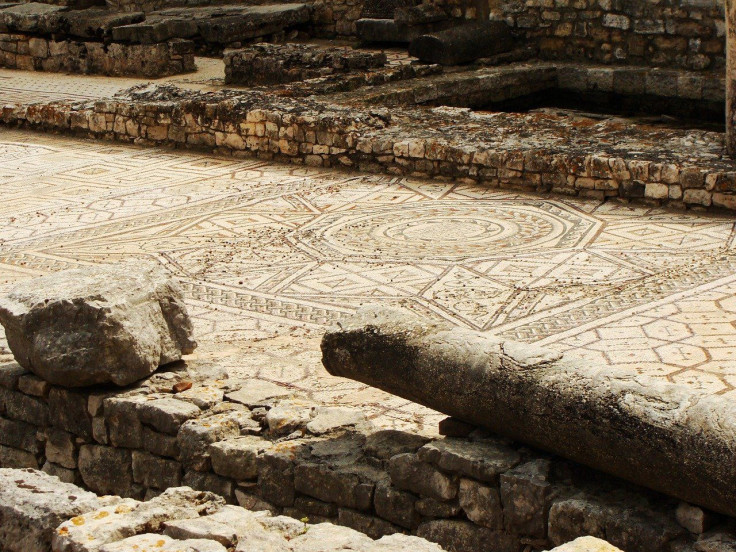'Rare' Roman Mosaic Depicting Scenes From 'The Iliad' Unearthed Under UK Farmer's Field
KEY POINTS
- The mosaic was discovered by the son of the landowner
- Evidence suggests it was owned by someone rich and knowledgeable in classic literature
- Its surrounding villa was also uncovered
Archaeologists have unearthed a rather special Roman mosaic from a farmer's field in the U.K. The first-of-its-kind piece of history depicts a part of the story of Achilles, the central character in the Homeric epic, "The Iliad."
The mosaic was found during the lockdown in 2020, the University of Leicester noted in a news release. It was Jim Irvine, the son of landowner Brian Naylor, who made the initial discovery and contacted the experts at Leicestershire County Council.
At 11 by 7 meters, the mosaic is quite large. It is believed to be the floor of what once was an entertaining area or dining room. It used to be a part of a large villa from the late Roman period between the 3rd and 4th century A.D., the university noted, adding that the villa itself was also surrounded by other features found during the archaeological evaluation and geophysical survey.
All in all, it appears that the property was occupied by someone who was rich and knowledgeable in classic literature.
"(T)he Rutland mosaic is unique in the U.K. in that it features Achilles and his battle with Hector at the conclusion of the Trojan War and is one of only a handful of examples from across Europe," the university noted.
"This is certainly the most exciting Roman mosaic discovery in the U.K. in the last Century. It gives us fresh perspectives on the attitudes of people at the time, their links to classical literature, and it also tells us an enormous amount about the individual who commissioned this piece," John Thomas, the deputy director of University of Leicester Archaeological Services and project manager, said in the news release.
"This is someone with a knowledge of the classics, who had the money to commission a piece of such detail, and it's the very first depiction of these stories that we've ever found in Britain," Thomas added.
Archaeological investigations began in August 2020, and more of the site was excavated and examined by students and staff of the University of Leicester's School of Archaeology and Ancient History in September this year. The Roman mosaic and the surrounding villa complex were then protected as a scheduled monument Thursday.
As Historic England explained, a scheduled monument must be physically a monument and "its heritage interest must be nationally important." With the designation, it is legally protected against "unauthorized works or unlawful activities."
"The site is on private land and not accessible to the public," the university noted.
"To have uncovered such a rare mosaic of this size, as well as a surrounding villa, is remarkable. Discoveries like this are so important in helping us piece together our shared history," Duncan Wilson, the chief executive of Historic England, said in the university news release. "By protecting this site we are able to continue learning from it, and look forward to what future excavations may teach us about the people who lived there over 1,500 years ago."
Footage shared by Historic England shares a glimpse of how massive the mosaic is as well as the experts' intricate work to unearth and preserve it.
A rare Roman mosaic and surrounding villa complex have been protected as a Scheduled Monument by @DCMS on our advice 👏
— Historic England (@HistoricEngland) November 25, 2021
The mosaic is the first in the UK displaying scenes from Homer’s The Iliad, and one of a handful from across Europe.
Find out more ➡️ https://t.co/KZWwW7QomK pic.twitter.com/NWizv85hpD
Meanwhile, in a video shared by the University of Leicester, one can see the mosaic in even greater detail, including a clear depiction of a "dramatic chariot scene" featuring Achilles and Hector as well as an alternative ending to the story.
Experts then found evidence suggesting that the site was repurposed later on. They also discovered human remains in the rubble that was covering the mosaic, suggesting that they were buried when the building wasn't occupied anymore.
"A ramble through the fields with the family turned into an incredible discovery," Irvine said in the news release. "The last year has been a total thrill to have been involved with, and to work with the archaeologists and students at the site, and I can only imagine what will be unearthed next!"

© Copyright IBTimes 2024. All rights reserved.






















